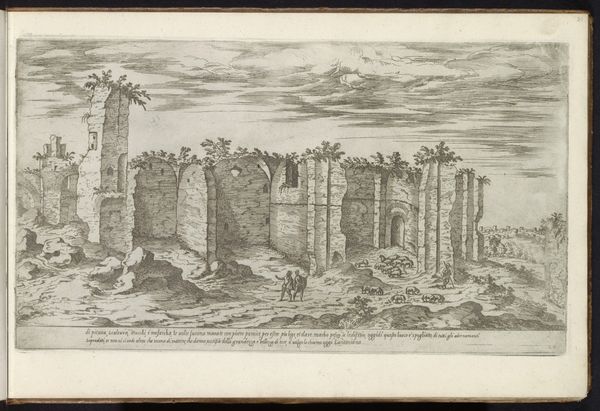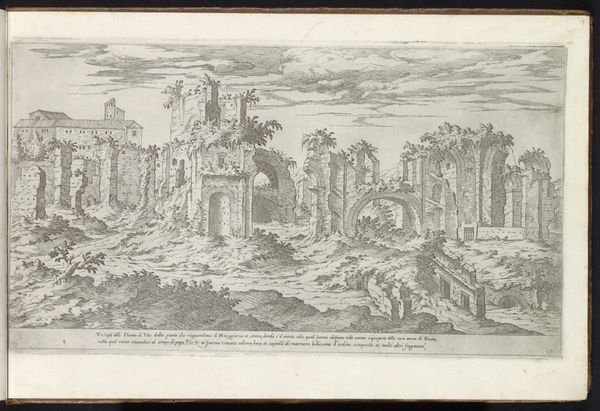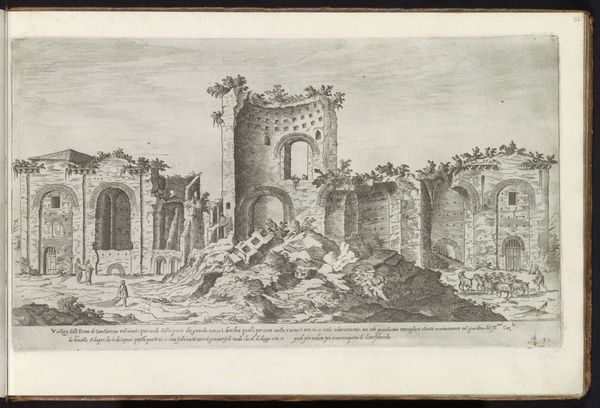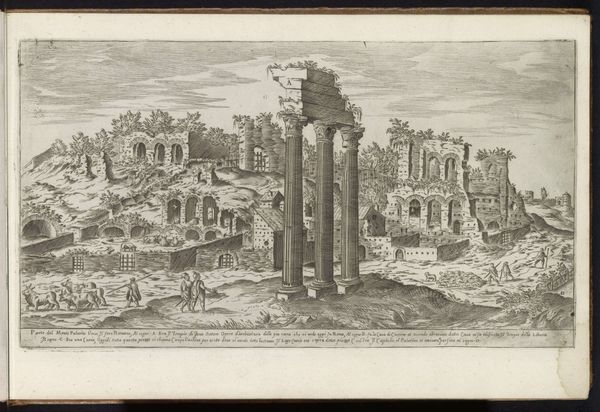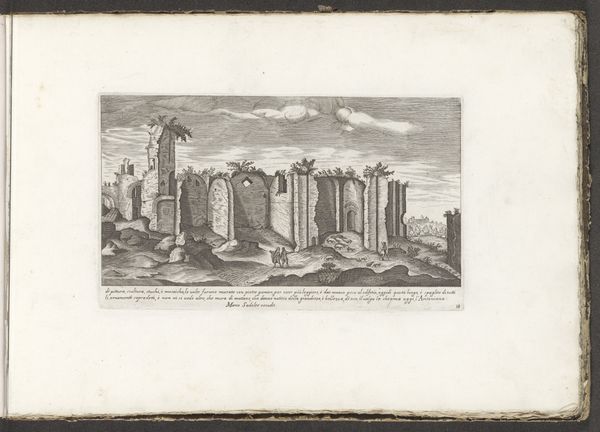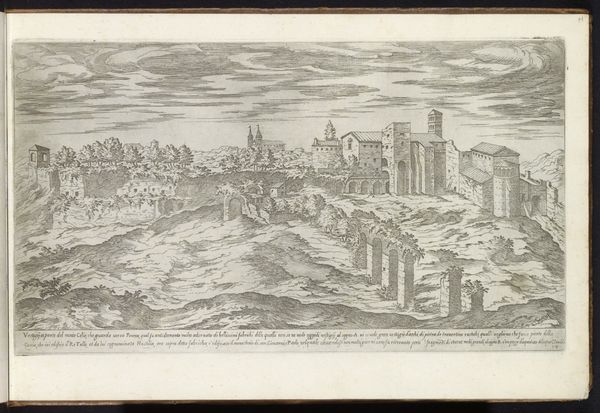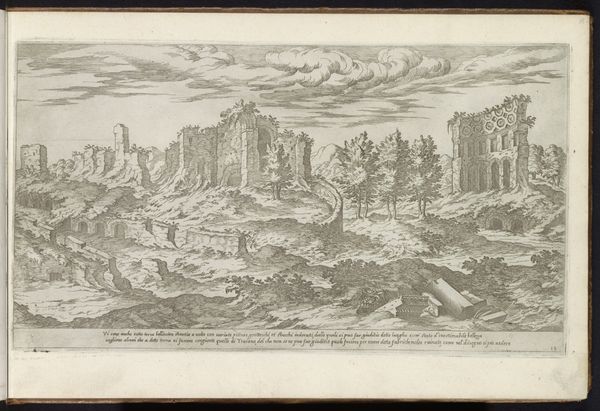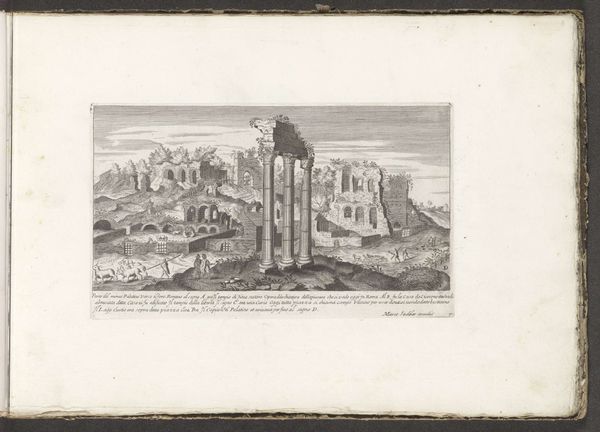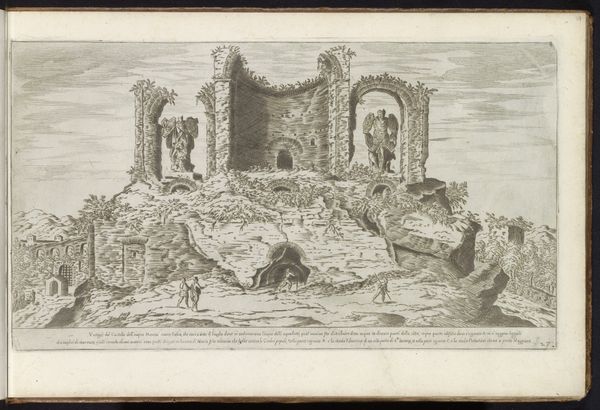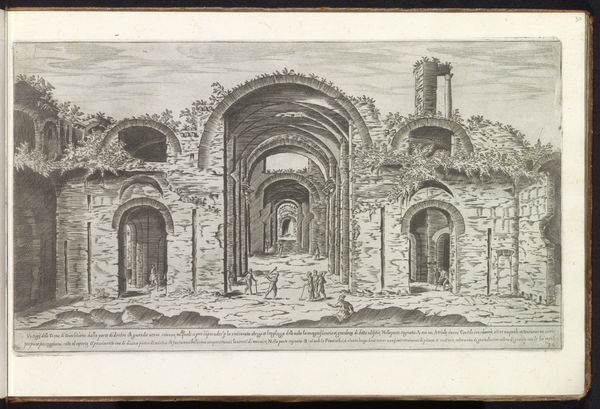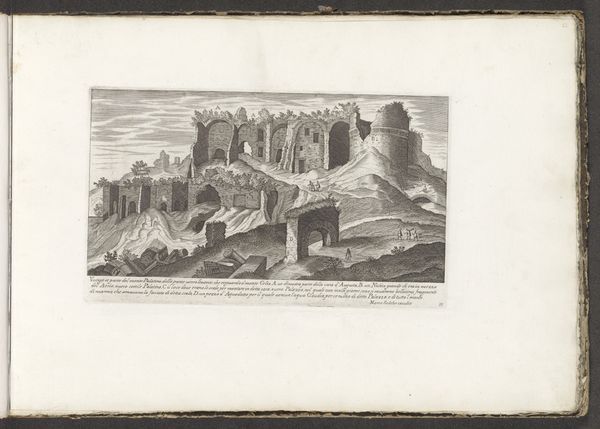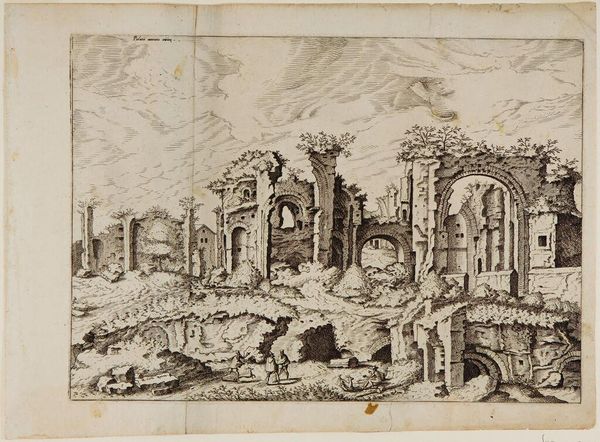
drawing, print, ink, engraving, architecture
pen and ink
drawing
ink drawing
pen sketch
landscape
11_renaissance
ink
italian-renaissance
engraving
architecture
Dimensions: height 227 mm, width 383 mm
Copyright: Rijks Museum: Open Domain
Editor: Here we have "Ruins of the Baths of Caracalla in Rome" by Étienne Dupérac, created around 1575, a pen and ink drawing transformed into an engraving. There's something haunting about these ruins. It’s a very stark depiction of decay. What's your interpretation of this work? Curator: Well, let’s consider Dupérac’s choices of medium: ink, engraving. These weren't simply aesthetic choices; they represent specific modes of production, and imply an intended audience. Engravings allowed for reproduction, for wider dissemination of knowledge about these Roman ruins. Why do you think that was so important at the time? Editor: To make them accessible? It seems less like creating a precious art object, and more about documentation. Curator: Exactly. And who controlled the means of that documentation and dissemination? Consider the role of the printmaker, the publisher, and their social status. Were they merely passive recorders of antiquity, or were they shaping its narrative through their labor? Also, consider what's being depicted: ruins. That signifies more than just architectural remains, doesn't it? Editor: It does. It speaks to the shifting of power, of empires rising and falling. Maybe he's drawing a parallel to the political climate of his own time. Curator: Precisely. By focusing on the remnants of a once-grand structure, Dupérac implicitly comments on the impermanence of power and the constant cycle of construction and destruction. He also invites viewers to contemplate the labor invested in building these baths and then reflect on how labor has shifted with this print. The creation of this print as its own mode of labor invites many conversations about how history, documentation, and labor shape both architecture and visual culture. Editor: I hadn't thought about it in terms of labour involved in its production, but the focus on materials really makes me rethink the image. Curator: And that's the power of materialist analysis - grounding the art object in its physical and social realities.
Comments
No comments
Be the first to comment and join the conversation on the ultimate creative platform.
